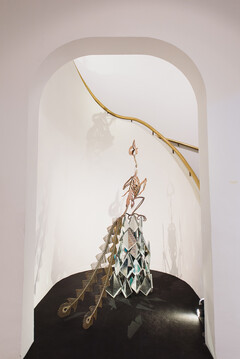Group Exhibition Singapore Art Museum, Singapore
In naming his fictional island ‘Utopia’, writer Thomas More conjoined the Greek words for ‘good place’ and ‘no place’ – a reminder that the idealised society he conjured was fundamentally phantasmal. And yet, the search and yearning for Utopia is a ceaseless humanist endeavor. Predicated on possibility and hope, utopian principles and models of worlds better than our own have been perpetually re-imagined, and through the centuries, continue to haunt our consciousness.
Where have we located our utopias? How have we tried to bring into being utopias we have aspired to? How do these manifestations serve as mirrors to both our innermost yearnings as well as to our contemporary realities – that gnawing sense that this world is not enough?
Drawing largely from SAM’s permanent collection, as well as artists’ collections and new commissions, After Utopia premises the idea of Utopia on four prospects. ‘Other Edens’ explores the image of the garden as a symbol of the originary paradise to which we long to return, even while reflecting back to us our current imperfections and fall from grace. Also encompassed in this strand are colonial imaginings of exotic dream-gardens overflowing with bounty, beckoning from distant, ‘undiscovered’ shores. ‘The City and its Discontents’ locates our aspirations to the ideal in the contemporary structures and environments we inhabit, and how these concrete realities fall short of the utopian impulses of architecture and urban planning, such that escape from the city to its opposite (or the countryside) becomes inevitable. ‘Legacies Left’ examines the legacy of ideologies that have left an indelible mark on the last century – thought experiments on which societies and nations have been built. The final chapter, “The Way Within”, journeys into the realms of self and psyche, where, eschewing the grand narratives of history – one utopia after another – a quiet thought lingers; perhaps, the search for ever-elusive utopia lies inward.



